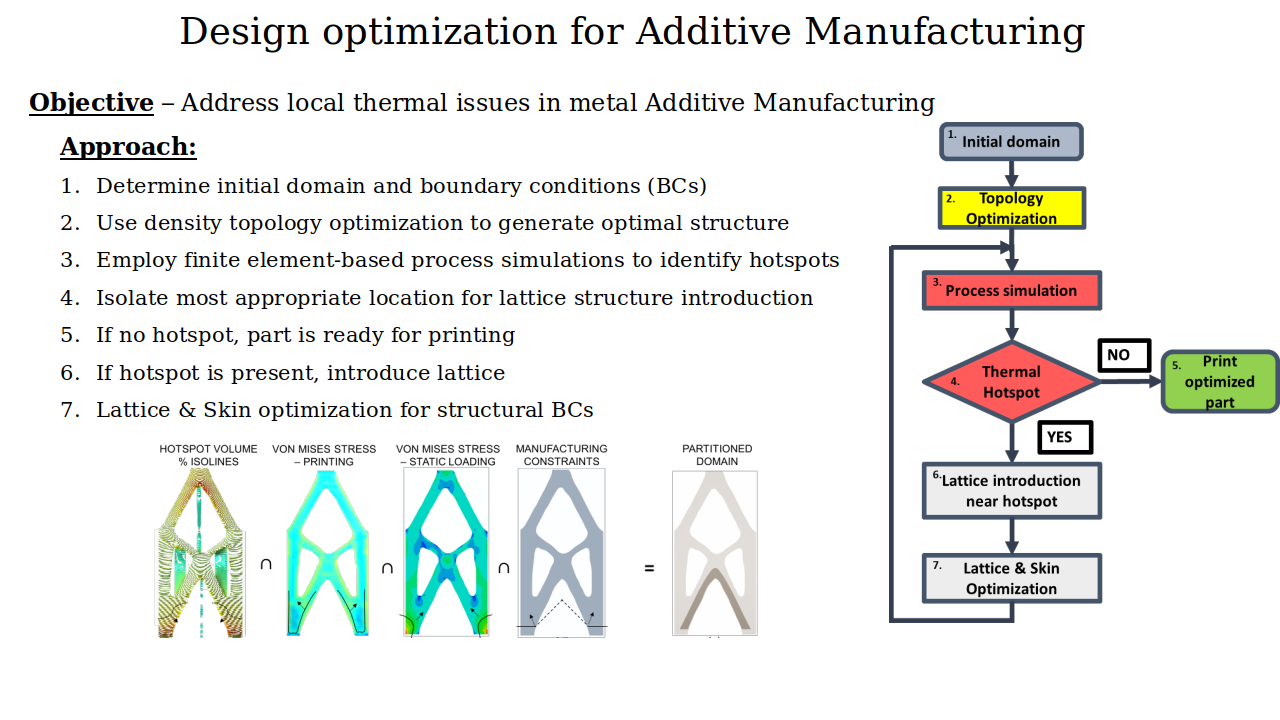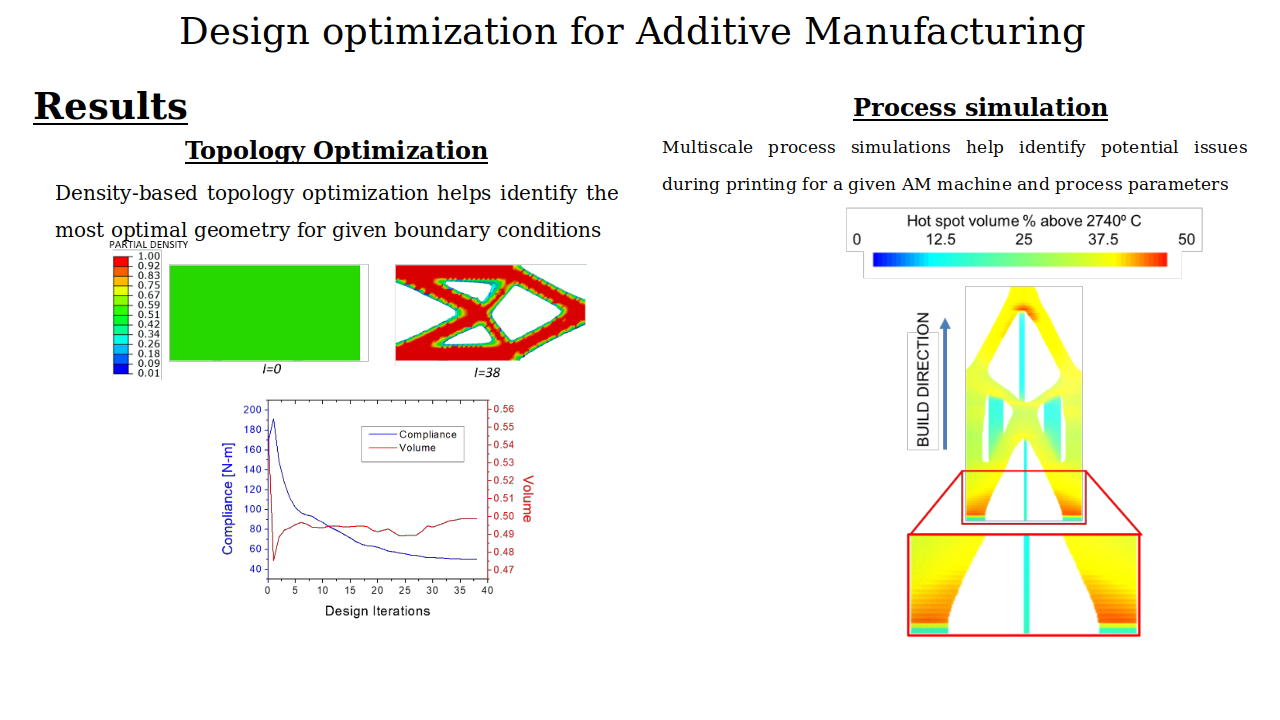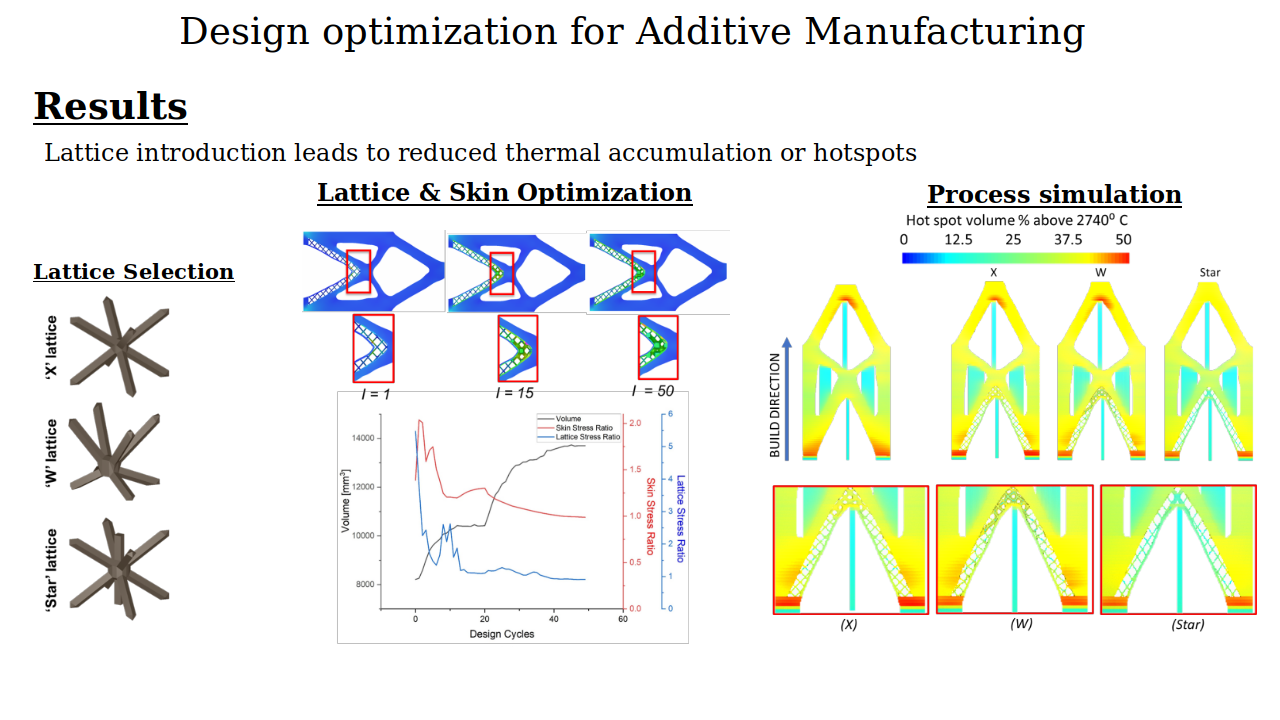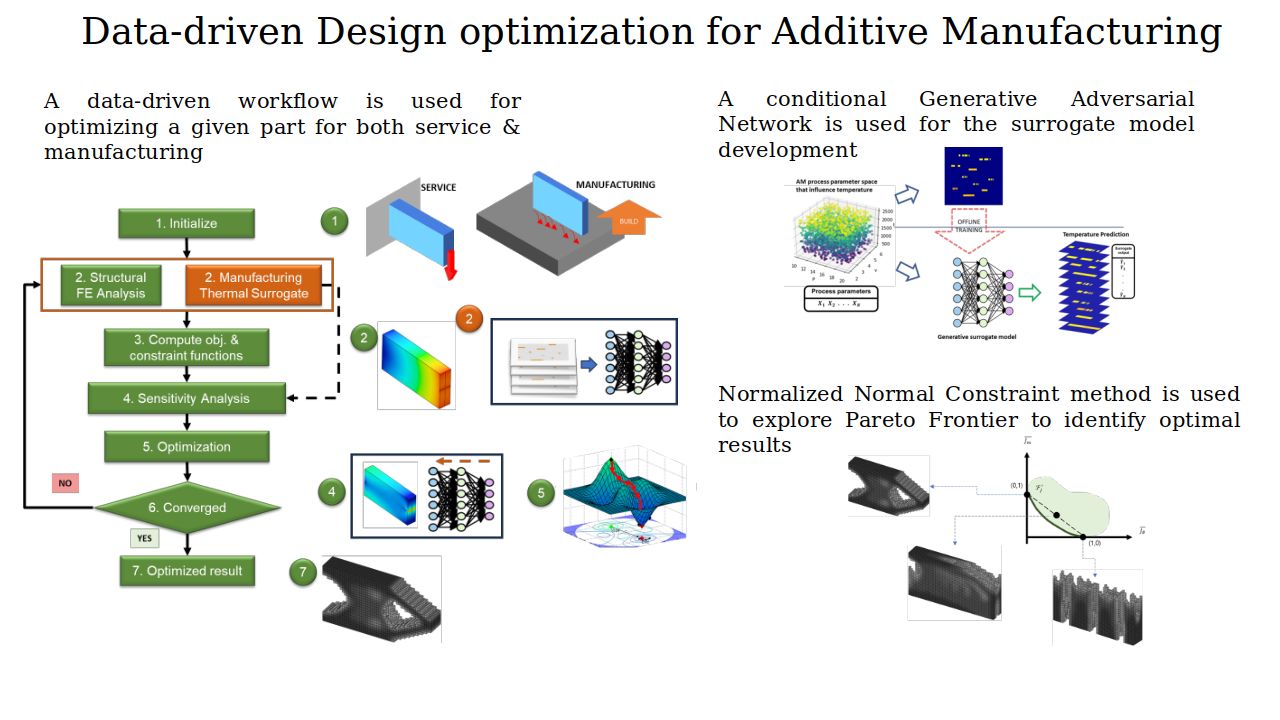The reliability and performance qualification of additively manufactured metal parts is critical for their successful and safe use in engineering applications. In current powder-bed fusion type metal additive manufacturing processes, local thermal accumulations affect material microstructure features, overall part quality, and integrity, as well as bulk mechanical behavior. To address such challenges, the MCMB Lab and TAM Group at Drexel University have developed a novel digital design approach combining topology optimization, process simulations, and lattice size optimization to address local thermal effects caused during manufacturing.
In current powder-bed fusion type metal additive manufacturing processes, local thermal accumulations affect material microstructure features, overall part quality and integrity, as well as bulk mechanical behavior. To address such challenges, a novel digital design approach is proposed combining topology optimization, process simulations, and lattice size optimization to address local thermal effects caused during manufacturing. Specifically, lattices are introduced in regions of topology optimized geometries where local thermal accumulations are predicted using the process simulations with the overall goal to mitigate high thermal gradients. The proposed approach reduces local thermal accumulations while achieving target mechanical performance metrics.



In additive manufacturing processes, transient thermal effects are captured by in-situ monitoring methods near the meltpool. This data can be used in a machine learning (ML) model to be used as a surrogate model for iterative approaches such as design optimization. To include such multiscale effects in design optimization, a digital design approach is proposed that considers thermal fields created during the AM process for an initial design and uses them as inputs to a novel data-driven and multiphysics (TO)-based design approach. An ML model is then employed to predict temperatures for geometries for which no in-situ monitoring data is available since they are produced during the in-silico optimization process and use them in the surrogate physics-based model to carry-on subsequent optimization steps. This type of data-driven approach allows, therefore, for iterative TO process which leverages both in situ monitoring data and a relatively faster physics-based approach in its solver.

Related Publications
-
- Perumal V., Najafi A.R., Kontsos A., “A Novel Digital Design Approach for Metal Additive Manufacturing to Address Local Thermal Effects,” Designs, vol. 4, no. 41, Oct. 2020.
- Perumal V., Abueidda D., Koric S., Kontsos A., “Temporal convolutional networks for data-driven thermal modeling of directed energy deposition”, Journal of Manufacturing Processes, vol. 85, pp.405-416, 2023
- Perumal V., Najafi A.R., Kontsos A., “A Novel Digital Design Approach for Metal Additive Manufacturing to Address Local Thermal Effects”, Designs, vol. 4, 41, 2020
